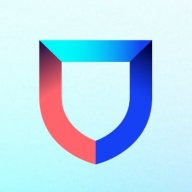

![Threat Stack Cloud Security Platform [EOL] Logo](https://images.peerspot.com/image/upload/c_scale,dpr_3.0,f_auto,q_100,w_64/o0no0it6ybl6satjcxomcblsgmd6.png)
Threat Stack Cloud Security Platform [EOL] and Lacework FortiCNAPP are rivals in cloud security. Lacework leads with its advanced features, attracting users seeking comprehensive solutions.
Features: Threat Stack is known for real-time threat detection, extensive observability across cloud workloads, and effective risk assessment capabilities. Lacework FortiCNAPP offers robust automation and integration, advanced AI-driven insights, and deep visibility across multi-cloud environments.
Room for Improvement: Threat Stack could benefit from enhanced automation, expanded AI capabilities, and greater integration options. Lacework could improve by simplifying deployment, providing more intuitive user interfaces, and reducing setup costs.
Ease of Deployment and Customer Service: Threat Stack provides a straightforward deployment model with proficient customer service, suitable for rapid implementation. Lacework offers more complex deployment aimed at integrating diverse environments, supported by responsive customer service.
Pricing and ROI: Threat Stack's competitive pricing offers a quick ROI with minimal upfront investment. Lacework, while costlier, delivers robust features that could justify its price for enhanced security returns.
The detailed information PingSafe gives about how to fix vulnerabilities reduces the time spent on remediation by about 70 to 80 percent.
After implementing SentinelOne, it takes about five to seven minutes.
Cloud Native Security does offer ROI.
When we send an email, they respond quickly and proactively provide solutions.
They took direct responsibility for the system and could solve queries quickly.
Having a reliable team ready and willing to assist with any issues is essential.
I would rate it a 10 out of 10 for scalability.
Scalability is no longer a concern because Cloud Native Security is a fully cloud-based resource.
I would rate the scalability of PingSafe 10 out of 10.
No lag, no crashing, no downtime.
It's a reliable solution that the organization is increasingly adopting for its robust features and security.
We contacted Cloud Native Security, and they addressed it in a day.
If I had to ask for anything to make it easier, it would be signed images that are GPG signed and a public repository where we can get the bits from.
If they can merge Kubernetes Security with other modules related to Kubernetes, that would help us to get more modules in the current subscription.
As organizations move to the cloud, a cloud posture management tool that offers complete cloud visibility becomes crucial for maintaining compliance.
Covering our 50,000 endpoints would have nearly bankrupted most security programs, even well-funded ones like ours.
I believe the enterprise version costs around $55 per user per year.
There are some tools that are double the cost of Cloud Native Security.
For example, we can set up an automation alert so that if a threat is detected on an endpoint, we can automatically take action on our Okta or AD environment, such as locking the account that was signed in or forcing a password reset.
This helps visualize potential attack paths and even suggests attack paths a malicious actor might take.
The infrastructure-as-code feature is helpful for discovering open ports in some of the modules.


| Company Size | Count |
|---|---|
| Small Business | 44 |
| Midsize Enterprise | 21 |
| Large Enterprise | 53 |
| Company Size | Count |
|---|---|
| Small Business | 4 |
| Midsize Enterprise | 4 |
| Large Enterprise | 3 |
| Company Size | Count |
|---|---|
| Small Business | 2 |
| Midsize Enterprise | 5 |
| Large Enterprise | 2 |
SentinelOne Singularity Cloud Security offers a streamlined approach to cloud security with intuitive operation and strong integration capabilities for heightened threat detection and remediation efficiency.
Singularity Cloud Security stands out for its real-time detection and response, effectively minimizing detection and remediation timelines. Its automated remediation integrates smoothly with third-party tools enhancing operational efficiency. The comprehensive console ensures visibility and support for forensic investigations. Seamless platform integration and robust support for innovation are notable advantages. Areas for development include improved search functionality, affordability, better firewall capabilities for remote users, stable agents, comprehensive reporting, and efficient third-party integrations. Clarity in the interface, responsive support, and real-time alerting need enhancement, with a call for more automation and customization. Better scalability and cost-effective integration without compromising capabilities are desired.
What are SentinelOne Singularity Cloud Security's standout features?SentinelOne Singularity Cloud Security is deployed in industries needing robust cloud security posture management, endpoint protection, and threat hunting. Utilized frequently across AWS and Azure, it assists in monitoring, threat detection, and maintaining compliance in diverse environments while providing real-time alerts and recommendations for proactive threat management.
Lacework FortiCNAPP provides robust cloud security, combining vulnerability management and multi-cloud insight with user-friendly controls, machine learning detection, and compliance support.
Lacework FortiCNAPP specializes in cloud security by merging machine learning anomaly detection with agent-based vulnerability management to offer detailed alerts and compliance reports. Its comprehensive approach allows continuous monitoring across AWS and Kubernetes, providing insights from an attacker's perspective. The platform offers automation and seamless Slack integration, facilitating collaborative and efficient cloud security management. Users value its ability to handle multi-cloud environments and scan IAC scripts, configurations, and compute nodes across AWS and GCP.
What are the key features?Organizations across sectors leverage Lacework FortiCNAPP for cloud security, focusing on compliance, security posture, and vulnerability management. It is widely used for monitoring AWS and Kubernetes environments, scanning IAC scripts, configurations, and securing compute nodes. It supports multi-cloud security posture management and log ingestion, enabling companies to maintain strong cloud infrastructures without dedicated security layers.
Threat Stack Cloud Security Platform [EOL] offers robust security features including endpoint monitoring, rule customization, and integration capabilities, with easy connectivity to cloud services like Docker and AWS.
Threat Stack Cloud Security Platform [EOL] provides tools for enhancing security visibility across cloud infrastructure. It supports AWS and Docker integration, facilitating efficient threat detection and management. Users appreciate its capability to configure customizable alerts and monitor endpoints, sessions, API interactions, and cloud services. However, there are areas needing improvement, such as better serverless environment support and reduced alert frequency. The platform services smaller organizations by compensating for limited security resources with its comprehensive monitoring and auditing tools.
What are the key features?In specific industries, Threat Stack Cloud Security Platform [EOL] is utilized for its strength in monitoring cloud infrastructure and preventing unauthorized access. Organizations in fields where cloud operations are critical use it for regular audits and monitoring. Its capabilities in threat management are leveraged to maintain secure operations and compliance, especially where there is no dedicated security team.
We monitor all Cloud Workload Protection Platforms (CWPP) reviews to prevent fraudulent reviews and keep review quality high. We do not post reviews by company employees or direct competitors. We validate each review for authenticity via cross-reference with LinkedIn, and personal follow-up with the reviewer when necessary.